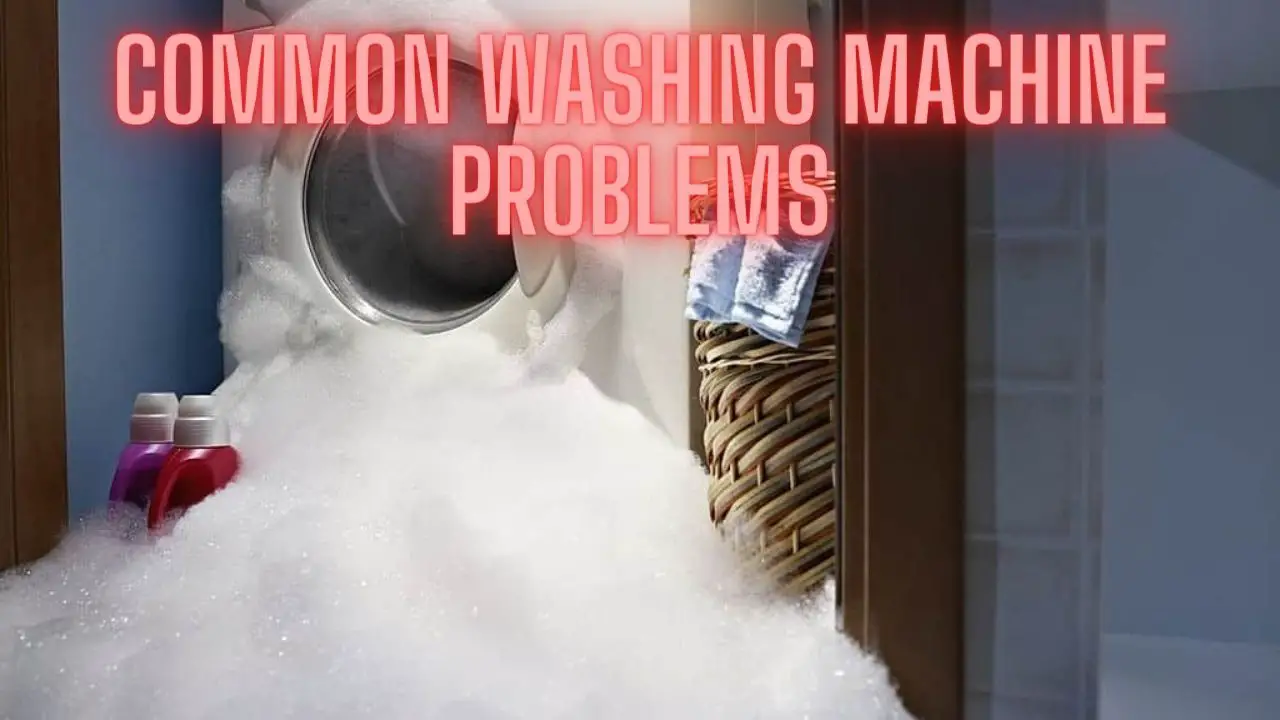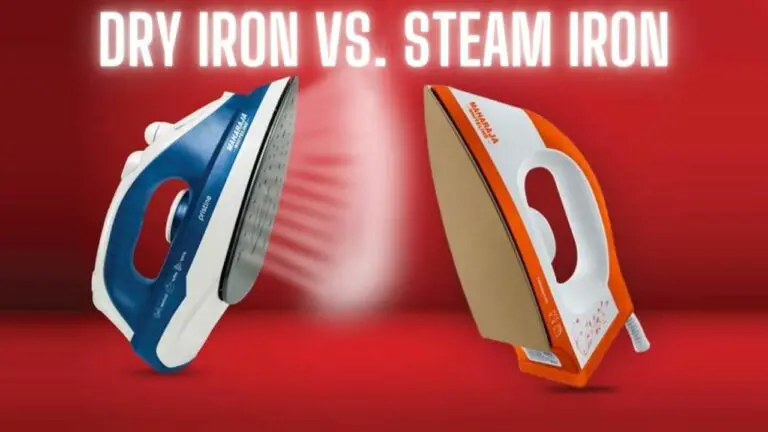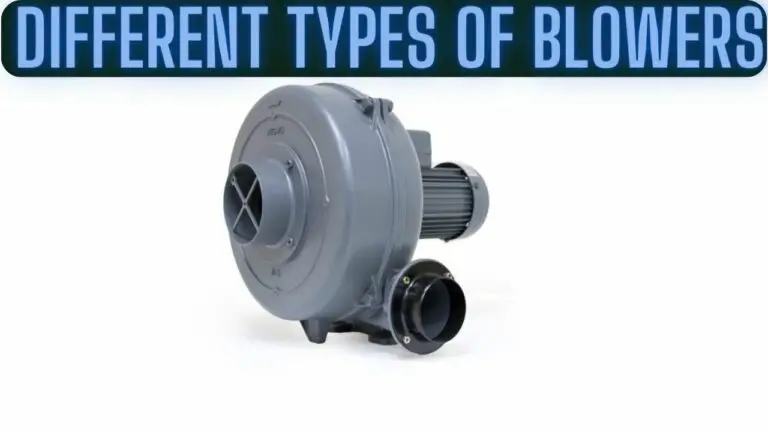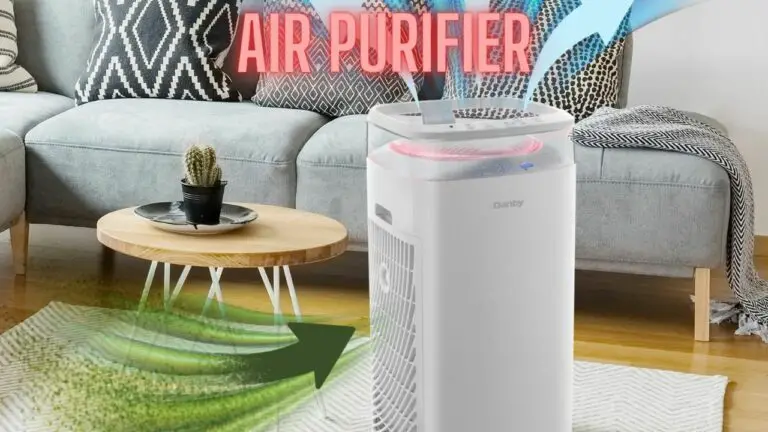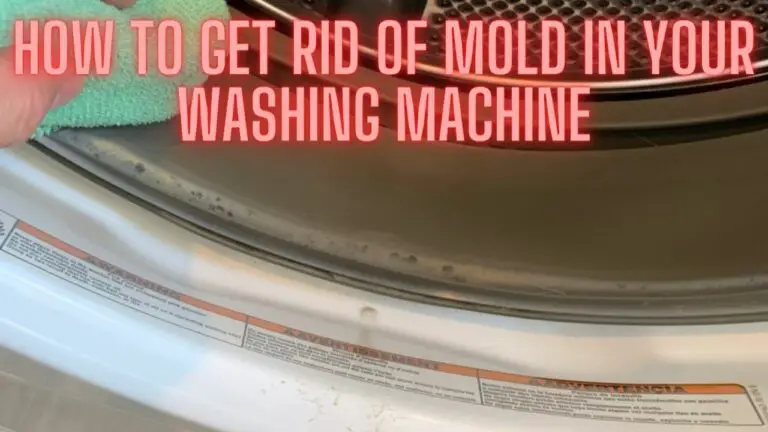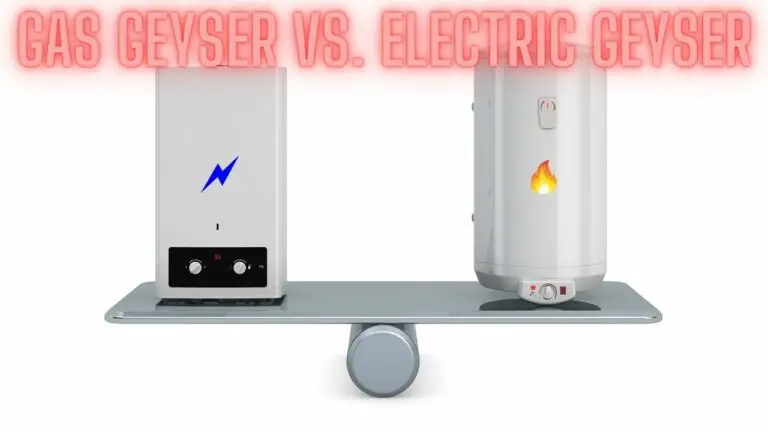Troubleshooting Common Washing Machine Problems
Introduction
A washing machine is an essential appliance in most households, providing convenience and efficiency in laundry care. However, like any complex machine, washing machines can encounter problems that disrupt their functionality. From issues with power supply to problems with drainage and spinning, there are several common issues that users may face.
This guide aims to provide troubleshooting assistance for common washing machine problems. By understanding the potential causes of these issues and following appropriate troubleshooting steps, users can diagnose and resolve problems with their washing machines more effectively. Whether your machine won’t turn on, doesn’t fill with water, or exhibits other problems, this guide will help you identify the issue and take corrective action to restore your washing machine to optimal performance.
Machine Won’t Turn On
When your washing machine fails to turn on, it can be frustrating and inconvenient. Several potential issues could be causing this problem. Here are some steps to troubleshoot and resolve the issue:
- Check Power Supply:
- Ensure that the washing machine is properly plugged into a functioning power outlet. Sometimes, the plug may become loose or disconnected.
- Check the circuit breaker or fuse box to ensure that the circuit supplying power to the washing machine has not tripped or blown a fuse. Reset the breaker or replace the fuse if necessary.
- Inspect Door/Lid Switch:
- Many washing machines are equipped with a door or lid switch that prevents the machine from operating when the door or lid is open. Ensure that the door or lid is securely closed and latched. If the switch is faulty or the latch is broken, the machine may not turn on.
- Look for any visible signs of damage or wear on the door or lid switch. If the switch appears damaged or malfunctioning, it may need to be replaced.
- Check Control Panel Settings:
- Verify that the washing machine’s control panel settings are correct. Some machines have specific settings or cycles that must be selected before the machine will start.
- Make sure that any buttons or knobs on the control panel are not stuck or jammed. Press each button or turn each knob to ensure they are functioning properly.
- Test Power Outlet:
- Plug another electrical device into the same power outlet used by the washing machine to verify that the outlet is providing power. If the other device also does not work, there may be an issue with the outlet itself or the circuit supplying power to it.
- Check Power Cord and Connections:
- Inspect the power cord for any visible signs of damage, such as fraying or cuts. If the cord is damaged, it may need to be replaced.
- Ensure that the power cord is securely connected to the back of the washing machine. If the connection is loose or damaged, the machine may not receive power.
- Consult the User Manual:
- Refer to the washing machine’s user manual for troubleshooting tips specific to your model. The manual may provide additional guidance on resolving issues related to power supply and startup problems.
If you have followed these troubleshooting steps and the washing machine still does not turn on, it may indicate a more serious electrical problem or malfunction within the machine. In such cases, it may be necessary to contact a qualified appliance repair technician for further diagnosis and repair.
Machine Doesn’t Fill with Water
When your washing machine fails to fill with water, it can be due to various reasons ranging from simple to more complex issues. Here’s a step-by-step guide to troubleshooting and resolving the problem:
- Check Water Supply:
- Ensure that the water supply valves connected to the washing machine are fully open. Sometimes, the valves may accidentally get turned off or partially closed.
- Verify that there is an adequate water supply to the washing machine. Test other faucets or appliances in the house to confirm that water is flowing properly from the plumbing system.
- Inspect Inlet Hoses:
- Examine the inlet hoses connected to the back of the washing machine for kinks, bends, or leaks. Ensure that the hoses are not damaged or restricted in any way.
- If the hoses appear damaged or compromised, they may need to be replaced. Consider using reinforced or braided stainless steel hoses for added durability and safety.
- Clean Inlet Screens/Filters:
- Locate the inlet screens or filters inside the hose connections on the back of the washing machine. These screens can become clogged with debris over time, restricting water flow.
- Carefully remove the screens or filters and clean them thoroughly under running water to remove any accumulated sediment or debris. Reinstall the screens or filters once they are clean.
- Check Water Pressure:
- Insufficient water pressure can prevent the washing machine from filling properly. Ensure that the water pressure in your home meets the manufacturer’s recommended requirements.
- If water pressure is low, consider installing a booster pump or adjusting the water pressure regulator to increase water flow to the washing machine.
- Inspect Water Inlet Valve:
- The water inlet valve controls the flow of water into the washing machine. If the valve is faulty or malfunctioning, it may not open properly to allow water into the machine.
- Test the water inlet valve for continuity using a multimeter. If the valve does not show continuity, it may need to be replaced.
- Check for Obstructions:
- Inspect the water inlet ports on the washing machine for any obstructions or blockages that may prevent water from entering the machine. Clear any debris or foreign objects that could be inhibiting water flow.
- Consult the User Manual:
- Refer to the washing machine’s user manual for specific troubleshooting steps and instructions related to water filling issues. The manual may provide additional guidance tailored to your model.
If you have followed these troubleshooting steps and the washing machine still does not fill with water, it may indicate a more serious mechanical or electrical problem. In such cases, it may be necessary to contact a qualified appliance repair technician for further diagnosis and repair.
Machine Doesn’t Drain
When your washing machine fails to drain water properly, it can lead to wet clothes and potential damage to the machine. Here’s how to troubleshoot and address this issue:
- Check Drain Hose:
- Inspect the drain hose for any kinks, bends, or obstructions that may be preventing proper drainage. Straighten the hose and remove any blockages if necessary.
- Ensure that the drain hose is not inserted too far into the drain pipe, as this can create a siphoning effect and prevent proper drainage.
- Inspect Drain Pump:
- The drain pump is responsible for removing water from the washing machine tub. If the pump is clogged or malfunctioning, it may not drain water properly.
- Access the drain pump, typically located at the bottom of the machine, and inspect it for any debris or obstructions. Clear any blockages and ensure that the pump impeller rotates freely.
- Check Drain Filter:
- Many washing machines are equipped with a drain filter or trap to capture lint, coins, and other debris that may obstruct the drain pump. Locate the drain filter and remove it to clean out any accumulated debris.
- Refer to the washing machine’s user manual for instructions on accessing and cleaning the drain filter.
- Test Drain Pump Motor:
- Use a multimeter to test the drain pump motor for continuity. If the motor does not have continuity, it may be defective and require replacement.
- Additionally, listen for any unusual noises coming from the drain pump while the machine is in operation. Grinding or buzzing noises may indicate a faulty pump motor.
- Inspect Lid Switch or Door Lock:
- Some washing machines are equipped with a lid switch or door lock mechanism that prevents the machine from draining if the lid or door is not securely closed. Ensure that the lid or door is properly closed and latched.
- Test the lid switch or door lock for continuity using a multimeter. If the switch or lock is faulty, it may need to be replaced.
- Check Drainage System:
- Verify that the washing machine’s drainage system, including the drain pipe and plumbing, is clear and free of obstructions. Use a plumber’s snake or auger to clear any clogs in the drain pipe if necessary.
Machine Doesn’t Spin Properly
When a washing machine fails to spin properly, it can result in clothes that are not fully cleaned or rinsed. Here’s how to troubleshoot and address this issue:
- Check Load Balance:
- Unevenly distributed laundry inside the drum can cause the washing machine to spin irregularly or not at all. Stop the machine and rearrange the clothes to ensure they are evenly distributed around the drum.
- Verify Spin Cycle Setting:
- Ensure that the washing machine is set to the appropriate spin cycle. Some machines have separate settings for spin speed, so make sure the correct speed is selected for the type of load being washed.
- Inspect Drive Belt:
- If the washing machine has a belt-driven system, inspect the drive belt for signs of wear, damage, or slipping. A worn or loose belt can prevent the drum from spinning properly.
- If the belt appears damaged or loose, it may need to be tightened or replaced. Refer to the washing machine’s manual for instructions on accessing and servicing the drive belt.
- Check Motor Coupling (Direct Drive Models):
- For washing machines with a direct drive system (no belt), check the motor coupling between the motor and the transmission or drum. A broken or worn motor coupling can prevent the drum from spinning.
- If the motor coupling is damaged, it will need to be replaced. This repair typically requires disassembly of the washing machine’s cabinet or access panel.
- Inspect Motor Brushes (Brush-Type Motors):
- If the washing machine has a brush-type motor, inspect the motor brushes for wear or damage. Worn brushes can prevent the motor from generating enough torque to spin the drum effectively.
- Replace the motor brushes if they are worn down beyond a certain length. Consult the washing machine’s manual for instructions on accessing and replacing the motor brushes.
- Test Motor Operation:
- Use a multimeter to test the motor for continuity and proper operation. If the motor does not have continuity or fails to run when power is supplied, it may be defective and require replacement.
- Listen for any unusual noises coming from the motor during operation, as this could indicate mechanical issues that are affecting its performance.
- Inspect Suspension Springs or Shock Absorbers:
- The washing machine’s suspension system, including springs or shock absorbers, helps stabilize the drum during the spin cycle. If these components are worn or damaged, they may allow excessive drum movement or vibration during spinning.
- Inspect the suspension springs or shock absorbers for signs of wear, damage, or detachment. Replace any components that appear worn or damaged to restore proper drum stability.
- Check for Obstructions:
- Inspect the drum and the area surrounding it for any foreign objects or debris that may be obstructing its movement. Items such as coins, buttons, or small articles of clothing can become lodged in the drum or drain pump, preventing proper spinning.
- Remove any obstructions or debris from the drum and the drain pump to allow for unrestricted movement.
If you have followed these troubleshooting steps and the washing machine still does not spin properly, it may indicate a more serious mechanical or electrical problem. In such cases, it is recommended to contact a qualified appliance repair technician for further diagnosis and repair.
Machine Is Noisy During Operation
When a washing machine produces excessive noise during operation, it can indicate underlying mechanical issues or components that require attention. Here’s how to troubleshoot and address this problem:
- Check Load Balance:
- Ensure that the laundry load inside the drum is evenly distributed. Overloading or uneven distribution of clothes can cause the washing machine to vibrate excessively and produce noise during the spin cycle.
- Stop the machine and rearrange the clothes if necessary to achieve better load balance.
- Level the Machine:
- Ensure that the washing machine is properly leveled on the floor. Use a spirit level to check if the machine is balanced horizontally and adjust the leveling feet as needed.
- Uneven leveling can cause the machine to vibrate excessively and produce noise during operation.
- Inspect Suspension Springs or Shock Absorbers:
- The washing machine’s suspension system, including springs or shock absorbers, helps stabilize the drum during operation. Worn or damaged suspension components can lead to excessive vibration and noise.
- Inspect the suspension springs or shock absorbers for signs of wear, damage, or detachment. Replace any components that appear worn or damaged to restore proper drum stability.
- Check for Loose Parts:
- Inspect the washing machine for any loose or detached parts that may be causing noise during operation. Pay particular attention to components such as bolts, screws, or panels that may have come loose over time.
- Tighten any loose fasteners or components to eliminate rattling or vibrating noises.
- Inspect Drive Belt (Belt-Driven Models):
- If the washing machine is equipped with a belt-driven system, inspect the drive belt for signs of wear, damage, or misalignment. A worn or misaligned belt can cause noise during operation.
- Replace the drive belt if it appears worn, damaged, or loose. Follow the manufacturer’s instructions for accessing and replacing the drive belt.
- Check Motor Bearings:
- Worn or damaged motor bearings can cause the washing machine to produce grinding or squealing noises during operation. Inspect the motor bearings for signs of wear, rust, or damage.
- If the motor bearings are worn or damaged, they will need to be replaced. This repair may require disassembly of the washing machine’s motor assembly.
- Inspect Drum Bearings:
- Faulty drum bearings can cause the washing machine to produce loud noises, particularly during the spin cycle. Inspect the drum bearings for signs of wear, rust, or damage.
- If the drum bearings are worn or damaged, they will need to be replaced. This repair may require disassembly of the washing machine’s drum assembly.
- Test Motor Operation:
- Use a multimeter to test the motor for continuity and proper operation. If the motor does not have continuity or exhibits abnormal noise during operation, it may be defective and require replacement.
- Check for Foreign Objects:
- Inspect the drum and the area surrounding it for any foreign objects or debris that may be causing noise during operation. Items such as coins, buttons, or small articles of clothing can become lodged in the drum or drain pump.
- Remove any obstructions or debris from the drum and the drain pump to eliminate noise caused by foreign objects.
If you have followed these troubleshooting steps and the washing machine continues to produce excessive noise during operation, it may indicate a more serious mechanical or electrical problem. In such cases, it is recommended to contact a qualified appliance repair technician for further diagnosis and repair.
Machine Leaks Water
When a washing machine leaks water, it can cause damage to the surrounding area and pose a risk of electrical hazards. Here are steps to troubleshoot and address this issue:
- Check Hose Connections:
- Inspect the connections between the water inlet hoses and the washing machine’s water supply valves. Loose or improperly connected hoses can cause leaks.
- Tighten the hose connections securely to prevent water leakage. Consider using pliers or an adjustable wrench to ensure a tight seal.
- Inspect Hose Condition:
- Check the water inlet hoses for signs of wear, damage, or deterioration, such as cracks, bulges, or leaks. If the hoses are damaged, they should be replaced immediately to prevent further leakage.
- Replace old or damaged hoses with high-quality, reinforced hoses that are designed for use with washing machines.
- Check Drain Hose:
- Inspect the drain hose for any kinks, bends, or obstructions that may be causing water to leak during the draining process. Straighten the hose and ensure that it is properly secured in place.
- Verify that the drain hose is not inserted too far into the drain pipe, as this can create a siphoning effect and cause water to leak out of the machine.
- Inspect Door Seal or Gasket:
- If your washing machine has a front-loading design, check the door seal or gasket for signs of wear, tears, or damage. A damaged door seal can allow water to leak out during the wash cycle.
- Clean the door seal regularly to remove any debris or residue that may be preventing a proper seal. If the seal is damaged, it should be replaced.
- Check Detergent Dispenser:
- Inspect the detergent dispenser drawer and housing for any cracks, leaks, or blockages that may be causing water to leak during the wash cycle. Clean the dispenser thoroughly to remove any detergent buildup or residue.
- Replace the detergent dispenser if it is damaged or malfunctioning to prevent further water leakage.
- Inspect Internal Components:
- If none of the above steps resolve the issue, it may be necessary to inspect internal components such as the water inlet valve, drain pump, or tub assembly for leaks or damage.
- Carefully examine these components for signs of leakage or corrosion. Replace any faulty or damaged parts to eliminate water leakage from the washing machine.
If you have followed these troubleshooting steps and the washing machine continues to leak water, it may indicate a more serious mechanical or structural issue. In such cases, it is recommended to contact a qualified appliance repair technician for further diagnosis and repair.
Machine Doesn’t Dispense Detergent or Fabric Softener
When a washing machine fails to dispense detergent or fabric softener properly, it can lead to unsatisfactory cleaning results. Here’s how to troubleshoot and address this issue:
- Check Dispenser Drawer:
- Remove the detergent and fabric softener dispenser drawer from the washing machine. Inspect the drawer and compartment openings for any detergent residue, debris, or clogs that may be obstructing the flow of liquid.
- Clean the dispenser drawer and compartment openings thoroughly with warm water and a mild detergent to remove any buildup or residue. Use a soft brush or cloth to scrub away stubborn deposits.
- Inspect Dispenser Components:
- Check the detergent and fabric softener compartments of the dispenser drawer for any damage, cracks, or defects that may be preventing proper dispensing. Replace the dispenser drawer if it is damaged or malfunctioning.
- Ensure that the dispenser’s siphon or syphon mechanism is functioning correctly. This mechanism is responsible for siphoning liquid detergent or fabric softener from the dispenser drawer into the washing machine drum during the appropriate cycle.
- Verify Water Supply:
- Confirm that the washing machine is receiving an adequate supply of water during the wash cycle. Insufficient water pressure or flow can affect the proper dispensing of detergent and fabric softener.
- Check the water inlet valves and hoses for any obstructions, kinks, or leaks that may be impeding water flow. Clean or replace the inlet valves and hoses as needed to restore proper water flow.
- Select Correct Cycle and Options:
- Ensure that you have selected the appropriate wash cycle and options for your laundry load. Some washing machines have specific cycles or settings for dispensing detergent and fabric softener.
- Refer to the washing machine’s user manual for guidance on selecting the correct cycle and options for dispensing detergent and fabric softener.
- Dilute Detergent and Softener:
- If you are using concentrated or thick liquid detergent or fabric softener, try diluting them with water before adding them to the dispenser drawer. This can help improve flow and prevent clogs or blockages.
- Use the recommended amount of detergent and fabric softener according to the manufacturer’s instructions. Using too much detergent or fabric softener can lead to excess buildup and clogging in the dispenser.
- Run Cleaning Cycle:
- Periodically run a cleaning cycle with hot water and a washing machine cleaner or descaler to remove any detergent residue, mineral deposits, or mold growth from the dispenser and other internal components.
- Follow the manufacturer’s instructions for running a cleaning cycle and use a suitable cleaning product that is compatible with your washing machine model.
If you have followed these troubleshooting steps and the washing machine still does not dispense detergent or fabric softener properly, it may indicate a more serious issue with the dispenser mechanism or other internal components. In such cases, it is recommended to contact a qualified appliance repair technician for further diagnosis and repair.
Machine Displays Error Codes
When a washing machine displays error codes, it indicates that the machine has detected a problem with its operation. Each error code corresponds to a specific issue, and understanding these codes can help diagnose and resolve the problem. Here’s how to troubleshoot and address error codes on a washing machine:
- Refer to the User Manual:
- The first step is to consult the washing machine’s user manual or technical documentation. Error code definitions and troubleshooting steps are often provided in the manual, along with recommended solutions.
- Decode the Error Code:
- Error codes are typically displayed on the washing machine’s control panel or digital display. Note down the specific error code being displayed, as this will help identify the problem.
- Use the user manual or online resources provided by the manufacturer to decode the error code. Error code formats and meanings may vary depending on the washing machine model and manufacturer.
- Perform a Reset:
- In some cases, error codes may be triggered by temporary glitches or malfunctions. Try resetting the washing machine by unplugging it from the power outlet for a few minutes, then plugging it back in.
- After resetting the machine, check if the error code persists. If the code reappears, proceed with further troubleshooting steps.
- Check for Obstructions:
- Error codes related to drainage or spin issues may be caused by obstructions in the drain pump or drain hose. Inspect the drain pump and hose for any blockages, such as lint, debris, or foreign objects.
- Remove any obstructions found in the drain pump or hose, and ensure that the pump impeller rotates freely. Clearing blockages can resolve error codes related to drainage problems.
- Inspect Water Supply and Pressure:
- Error codes related to water fill issues may indicate problems with the water supply or water inlet valves. Check that the water supply valves connected to the washing machine are fully open and supplying water at adequate pressure.
- Verify that the water inlet hoses are not kinked or twisted, which can restrict water flow. Clean the inlet valve screens to remove any debris or sediment that may be blocking them.
- Test Components for Malfunction:
- If error codes persist after performing basic troubleshooting steps, it may indicate a malfunctioning component such as a sensor, control board, or motor. Use a multimeter to test these components for continuity, voltage, or proper operation.
- Replace any faulty components identified during testing to resolve the underlying issue causing the error codes.
- Contact Manufacturer or Technician:
- If you are unable to diagnose or resolve the error codes on your own, contact the washing machine manufacturer’s customer support for assistance. Provide them with the specific error code and details of the issue for further guidance.
- Alternatively, schedule a service appointment with a qualified appliance repair technician to diagnose and repair the washing machine.
By following these troubleshooting steps and addressing the underlying causes of error codes, you can identify and resolve issues with your washing machine effectively. Regular maintenance and prompt attention to error codes can help ensure optimal performance and prolong the lifespan of your washing machine.
Machine Smells Bad
When a washing machine develops a bad odor, it can be unpleasant and affect the cleanliness of your laundry. This odor is often caused by a buildup of bacteria, mold, and mildew inside the machine. Here are steps to troubleshoot and address the issue of a smelly washing machine:
- Clean the Drum:
- Start by cleaning the interior drum of the washing machine. Wipe down the drum walls, door seal, and any other accessible surfaces with a solution of warm water and mild detergent.
- Use a soft brush or cloth to scrub away any visible residue, dirt, or grime. Pay particular attention to areas where detergent or fabric softener may accumulate.
- Clean the Dispenser Drawer:
- Remove the detergent and fabric softener dispenser drawer from the washing machine. Clean the drawer thoroughly with warm water and mild detergent to remove any residue or buildup.
- Pay attention to any mold or mildew that may be present in the dispenser compartments. Use a toothbrush or small brush to scrub away stubborn residue.
- Clean the Door Seal or Gasket:
- If your washing machine has a front-loading design, inspect the door seal or gasket for mold or mildew growth. Wipe down the seal with a solution of equal parts water and vinegar to kill mold and remove odors.
- Use a soft brush or cloth to clean between the folds of the door seal where mold and mildew may accumulate.
- Run a Cleaning Cycle:
- Many modern washing machines are equipped with a cleaning cycle specifically designed to remove mold, mildew, and bacteria from the drum and internal components.
- Follow the manufacturer’s instructions for running a cleaning cycle on your washing machine. Use a washing machine cleaner or descaler to effectively sanitize the interior and eliminate odors.
- Use Hot Water and Vinegar:
- For a natural and cost-effective cleaning solution, run a hot water cycle with white vinegar. Pour two cups of vinegar into the detergent dispenser or directly into the drum, then run a hot water cycle without any laundry.
- Vinegar helps dissolve detergent residue, kill bacteria, and neutralize odors inside the washing machine. Repeat this process regularly to maintain a clean and odor-free machine.
- Dry the Drum and Seal:
- After cleaning, leave the washing machine door open for several hours to allow the interior drum and door seal to air dry completely. Adequate ventilation helps prevent mold and mildew growth.
- Wipe down the door seal with a dry cloth to remove any remaining moisture. Ensure that no water is trapped in the drum or seal, as this can contribute to odor development.
- Regular Maintenance:
- To prevent odors from recurring, establish a regular maintenance routine for your washing machine. Clean the drum, dispenser drawer, and door seal at least once a month to remove buildup and prevent mold growth.
- Use high-quality detergents and fabric softeners that are compatible with your washing machine. Avoid overloading the machine with detergent, as excess residue can contribute to odors.
By following these steps and incorporating regular maintenance practices, you can effectively eliminate odors and keep your washing machine clean and fresh-smelling. If persistent odors persist despite cleaning efforts, it may indicate underlying issues with the machine’s drainage system or internal components. In such cases, consider contacting a qualified appliance repair technician for further diagnosis and repair.
FAQS
Why is my washing machine not turning on?
- Possible Causes: Power supply issues, door not properly closed, faulty door lock or switch, broken timer or control panel.
- Solution: Check the power supply, ensure the door is securely closed, inspect the door lock or switch, and consider professional repair if the timer or control panel is malfunctioning.
What should I do if my washing machine won’t drain?
- Possible Causes: Clogged or kinked drain hose, clogged pump or filter, faulty drain pump.
- Solution: Check the drain hose for clogs, clean the pump filter, and consider replacing the drain pump if it’s malfunctioning.
Why is my washing machine vibrating excessively or shaking during the spin cycle?
- Possible Causes: Uneven load distribution, unlevel machine, damaged or worn-out shock absorbers or suspension rods.
- Solution: Balance the load, level the machine, and inspect the shock absorbers or suspension rods for damage.
How can I stop my washing machine from leaking water?
- Possible Causes: Damaged or loose hoses, faulty door seal or gasket, overloading.
- Solution: Check and tighten or replace hoses and connections, inspect the door seal and replace if damaged, and avoid overloading the machine.
How do I get rid of foul odors in my washing machine?
- Possible Causes: Mold or mildew growth, excessive detergent usage, trapping moisture by keeping the door closed.
- Solution: Run a hot water cycle with vinegar or a washing machine cleaner, use the recommended amount of detergent, and leave the washer door open to allow it to air out.
What should I do if my washing machine is not spinning or agitating?
- Possible Causes: Broken or worn drive belt, malfunctioning motor or motor control board, faulty lid switch or door lock.
- Solution: Inspect the drive belt and replace if damaged, seek professional repair if the motor or control board is malfunctioning, and check and replace the lid switch or door lock if needed.
Can I repair my washing machine myself?
- Some minor issues, like cleaning filters or checking hoses for clogs, can be addressed by homeowners. However, for more complex problems involving electrical components or major repairs, it’s often safer and more effective to seek professional appliance repair services.
How can I prevent common washing machine problems in the future?
- Regular maintenance, such as cleaning the lint filter, checking for loose hoses, and using the right amount of detergent, can help prevent common issues. Additionally, avoid overloading the machine and ensure proper leveling to reduce wear and tear.
Conclusion
In many cases, simple troubleshooting and maintenance can resolve common washing machine problems. However, if you’re unsure about diagnosing or fixing an issue, it’s advisable to consult the manufacturer’s manual or seek professional appliance repair assistance to ensure the safety and longevity of your washing machine.

